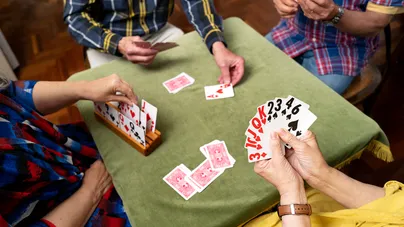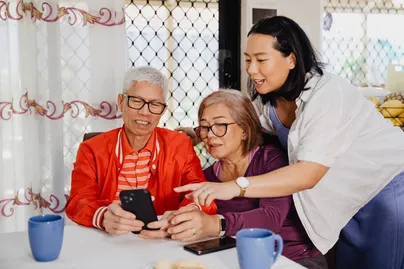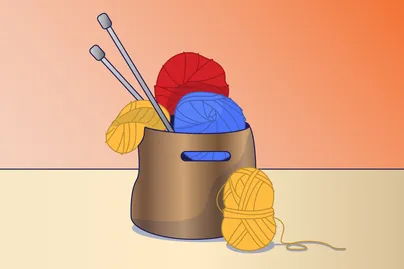In the Lounge
Sit back and enjoy your favourite TV show or game in your lounge room with some easy processes and helpful products. Improve your independence in the lounge with the suggestions below.
How independent are you in the lounge?
Start by asking these questions:
- Is your floor free of clutter? Are rugs creating a trip hazard?
- Do you struggle to hear the TV? Do you find it difficult to hear conversation at parties? Do you find background noise makes it harder to hear?
- Do you find TV remotes hard to use? Is the TV hard to navigate?
- Do you require large text on your computer screens, keyboards, and telephone buttons to make them easier to read?
- TEST
Plan
Arrange your chair to fit you comfortably with the correct seat depth and height. If you use it for reading, place a light to brighten the page without shining into your eyes. If you sit here to watch TV, make sure your head and neck are in a comfortable, neutral position and that you can easily reach essential items like remotes and instructions. Try positioning a side table so you can safely reach drinks and snacks.
Prepare
Place the chair you use for crafting or writing with the window behind you to reduce glare and improve visibility. To enhance the visibility of small, light items, use a table or lap tray with a black non-slip mat to create contrast.
Pace
Keeping your brain active is essential for living a fulfilling, healthy life. It’s never too early or too late to start! You can enhance and safeguard your brain's health at any age. Look after your brain by improving heart health, staying active, engaging in mental challenges, eating a healthy diet, and enjoying social activities.
Posture
We are not designed to sit in a chair for long periods of time. Maintaining a supported, relaxed posture helps prevent muscle stiffness and discomfort. Sitting for long periods slows down blood flow, which can impact heart health, brain function, and the muscles in the hips and back. Having a chair and desk that is set up for you is important but standing and moving around is the key to staying healthy.
Simple solutions for everyday lounge tasks

Using TV remotes
Simplified TV remotes with large buttons work with any television with an infrared remote. These types of remotes can make it easier to find what you want to watch. Try connecting your headphones to your TV so you can enjoy your favourite programs with clear sound.

Seeing and holding crafts and games
Vision Australia has an online store that sells a range of items to help you see small crafts and needles. There are standard-sized playing cards with large symbols and numbers, or you can buy larger playing cards. Cardholders can help reduce strain during longer games.

Holding and reading books
A simple book stand can ease strain and allow you to sit closer to your book. Many books, diaries and calendars are now printed in large print to make them easier to read.

Using accessibility features
Kindle eReaders have accessibility features to help you read. You can choose a larger font and greater contrast. A Kindle also has a text-to-speak function and will play audiobooks for you.
Enjoy independence every day
You can enjoy independence everywhere and everyday. We have created some helpful guides for different areas of your home and life to help you consider what small changes you can make or assistive technology you can use to regain or maintain your independence.
Everyday Tips

